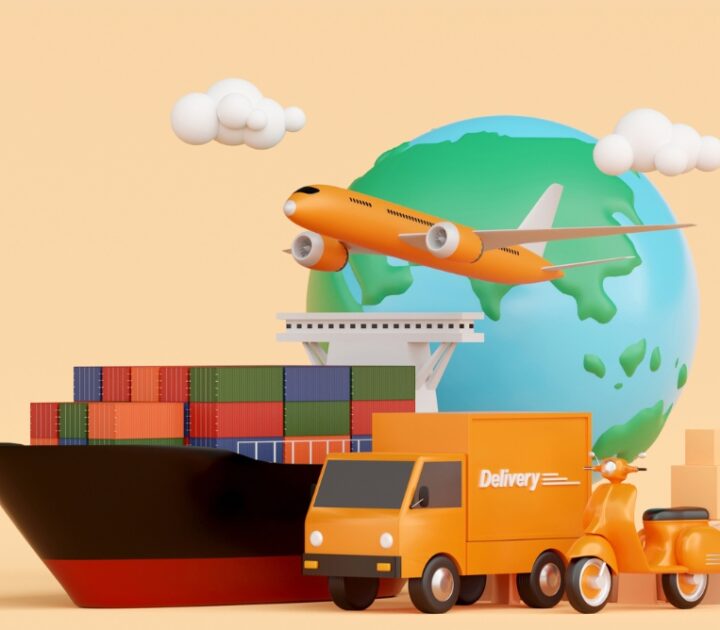The omni-channel supply chain is in our headlines and on our lips. Retailers are experimenting with different ways to meet growing consumer expectation to interact with products in different ways. They can now order online, through mobile apps or by QR scan, and receive their goods through store pickup, drive-through, home delivery, locker drop-off or even have them placed in the trunk of a car. The innovation is exciting and is developing quickly.
Online grocery landscape
But looking at the market today, it does not seem as though online delivery has disrupted the grocery retailing model very much at all. The service is more popular in Europe than in the U.S., but still has not taken hold. Online grocery spending accounts for about 6-7% of the UK grocery market, 5% in France and the U.S., and is less than 2% everywhere else. Developing markets seem to have the highest potential: a recent Nielsen survey showed that 37% of shoppers in Asia Pacific claimed to have ordered online groceries, compared to 13% in Europe.
Worse, it doesn’t seem like anyone is making any money. Estimates in the UK are that each delivery loses £3-5. Some are turning a profit, of course — Ocado, a pure online UK grocer, had 2016 pretax profit of just over 1%. In the U.S., Instacart claims to have a positive gross margin in 10 of its 19 U.S. markets, but that is before factoring in considerable marketing and IT costs.
There are many reasons why online grocery delivery has not taken hold and become profitable. The margins are thin, the product is highly perishable and the supply chain is expensive and complex. The products are also bulky and hard to stack, driving up transportation and handling costs. And it seems people generally prefer to squeeze their avocados before purchasing them.
Amazon fresh
Even Amazon Fresh, which leads the U.S. market, has not fared terribly well. Amazon gained notoriety when it began field-testing online grocery delivery in 2007 in downtown Seattle. There was reason to be excited. Amazon was well on its way to dominating online retailing, and the grocery business seemed ripe for disruption, just as other retailing sectors were being challenged. The field test took time, though. The roll-out to other US cities began six years later, in 2013. The first overseas endeavor for Amazon Fresh was to London in 2016, and the business is now eyeing the Australian market. But ten years after Amazon set out to disrupt groceries, the company is still struggling to establish a presence. It is in less than half the cities as Peapod, one prominent online competitor.
Amazon Fresh’s pricing model has also not yet stabilized either. Late last year, the company went from an annual fee that bundled Amazon Fresh with the popular Amazon Prime membership, to a slightly cheaper monthly fee that includes unlimited deliveries and requires Amazon Prime membership, which must be purchased separately. This means that, to use Amazon Fresh, consumers must have an Amazon Prime membership.
This means that Amazon Fresh essentially relies on an old-fashioned business loss leader strategy. Amazon Prime charges a flat, annual fee for unlimited two-day delivery, streaming content and other benefits. Amazon has shown a willingness to lose money on its digital retail business to foster a broad, loyal customer base through Amazon Prime. In the U.S., 60% of Amazon’s customers are Prime members, and a Prime member will spend, on average, almost double that of a non-Prime member per order. Amazon Fresh is likely to be another vehicle to drive this strategy, by offering another enticement to join Prime. Amazon Fresh is well-known, has received outsized media attention in relation to its market share and success, and encourages Amazon Prime membership. As a loss leader, it’s not hard to see Amazon Fresh as a success, even if it is not quite a disruptor.
Amazon Fresh’s success may lie in how its beans are counted. Brick-and-mortar grocery stores are mostly made up of fixed costs. The goal is for the thin gross margin of sales to cover slightly more than the fixed costs (rent, utilities, store employees), for a profit. Comparatively, in online grocery, the costs are mostly variable. The more orders there are, the more a company has to pay for picking, packing, transport and delivery. There are few avenues to profitability.
One route, however, is to fill the truck with more — ideally higher-margin — goods. This is where Amazon Fresh starts to look clever. The company has a supply chain configuration that is different to its competitors. Other players generally send order pickers into stores, who pick directly from store shelves, either in partnership with, or as business units of, grocery chains. Amazon Fresh uses replenishment centers just outside urban centers. This allows Amazon to potentially complement the usual offer catalogue with up to 500,000 non-consumable items for delivery with Amazon Fresh.
With Amazon Fresh’s link to Amazon Prime and the shared variable costs with non-grocery items, Amazon can potentially leverage Amazon Fresh in ways competitors cannot, by helping to absorb the warehousing costs and sending more full trucks on the road. With this model, low-margin Amazon Fresh items are on trucks that are already scheduled to hit the road — and with higher margin goods for Prime members. It seems that store picking is not the only road to profitability. Recently, Both Tesco and another UK grocery chain, Sainsbury’s, have added replenishment centers in the London area to bolster their in-store picking models.
Amazon gets fresher?
Amazon is still rolling out retail innovations. The company recently announced that it was opening a retail grocery store in Seattle without cashiers or a checkout process. Instead it will use computer vision and deep learning to capture products consumers take from shelves. Amazon has named the concept Amazon Go. One can’t help but imagine the time and money saved by the technology.
Amazon spoke of opening 2,000 more locations. But the company has now shelved those expansion plans. It appears that the technology cannot manage more than 20 customers at a time in a concept store that is 167 square meters big, with a very restrained product catalogue. How would it fare in a typical U.S. grocery store, which is almost 4,000 square meters large and offers about 40,000 different products?
Takeaway
Amazon Fresh and the online grocery market prove that the scope for digitalization of supply chains is vast. But the Amazon Fresh story reminds us that the same business rules apply to disruptors as they do to brick-and-mortar retailers. Innovation is hard, not everything is a disruption, and the economic equation can be muddled. Patience and attention to results are the best mix for success moving forward.
Ralf Seifert is Professor of Operations Management at IMD. He directs IMD’s new Digital Supply Chain Management program, which addresses both traditional supply chain strategy and implementation issues as well as digitalization trends and new technologies.
![How AI gives Taobao's one billion customers the personal touch [Video]](https://www.imd.org/ibyimd/wp-content/uploads/2024/03/TheInterview-ChrisTung-IbyIMD-TopBanner-5_4-1250x1000-1-720x630.jpg)



